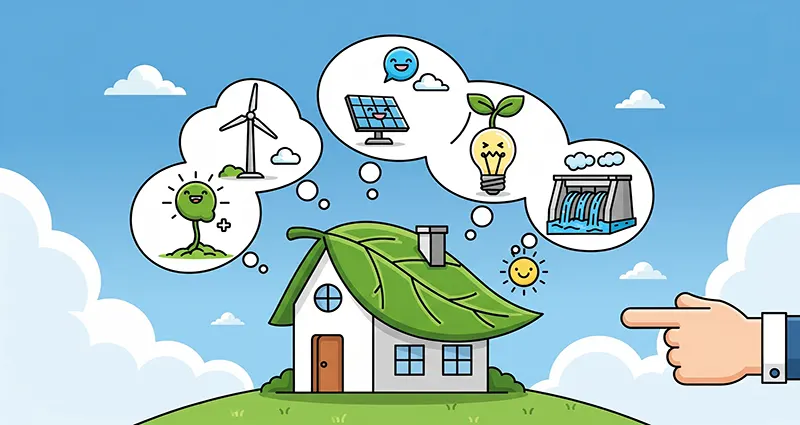As more homeowners become aware of the environmental impacts of traditional energy sources, many are looking for ways to reduce their carbon footprint. One effective solution is to switch to a green energy supplier. But with so many options available, how to choose a green energy supplier for your home can feel overwhelming. This article will guide you through the essential factors to consider when selecting a provider that aligns with your values and energy needs.
What Is Green Energy?
Green energy, also known as renewable energy, is energy generated from natural, environmentally friendly sources such as wind, solar, hydro, and biomass. Unlike fossil fuels, green energy does not produce harmful greenhouse gases, helping combat climate change and promote sustainability.
Steps on How to Choose a Green Energy Supplier for Your Home
1. Verify the Supplier’s Green Energy Credentials
Not all suppliers claiming to offer green energy are equally committed to sustainability. To ensure authenticity:
- Look for certifications such as Green-e Energy, EPA Green Power Partnership, or other recognized environmental labels.
- Review the supplier’s energy mix and verify that it primarily comes from renewable sources.
- Check third-party audits or annual sustainability reports if available.
2. Understand the Energy Plans Available
Green energy suppliers usually offer various plans, including:
- 100% Renewable Energy Plans: Energy supplied entirely from renewable sources.
- Partial Renewable Plans: Part of your energy comes from green sources, the rest from conventional sources.
- Carbon Offset Plans: Traditional energy use offset by investments in renewable projects.
Choose a plan that fits your environmental goals and budget.
3. Compare Pricing and Contract Terms
Green energy can sometimes be more expensive than conventional energy. When considering how to choose a green energy supplier for your home, compare prices carefully:
- Check the rates per kWh and any additional fees.
- Review contract length, cancellation policies, and any price guarantees.
- Look for flexible month-to-month plans if you prefer no long-term commitment.
4. Evaluate Customer Service and Reviews
Reliable customer service makes managing your energy supply easier:
- Research customer reviews on platforms like Trustpilot or Better Business Bureau.
- Consider responsiveness, billing accuracy, and support availability.
- Ask about tools or apps for tracking your energy usage and environmental impact.
5. Assess Additional Benefits and Programs
Some green energy suppliers offer incentives or programs that add value:
- Solar panel installation assistance or discounts.
- Energy efficiency consultations or rebates.
- Community solar projects participation.
These extras can enhance your overall experience and savings.
6. Check Availability in Your Area
Not all green energy suppliers operate nationwide. Confirm that the supplier services your region before proceeding.
Why Choose a Green Energy Supplier?
Switching to a green energy supplier for your home supports cleaner air, reduces dependence on fossil fuels, and encourages the growth of sustainable energy infrastructure. It’s a proactive step to protect the planet and inspire others in your community to follow suit.
Learning how to choose a green energy supplier for your home empowers you to make environmentally responsible decisions without sacrificing convenience or cost-effectiveness. By verifying credentials, comparing plans, and considering customer service, you can select a supplier that meets your needs and helps create a greener future. Make the switch today and contribute to sustainable living with confidence.












